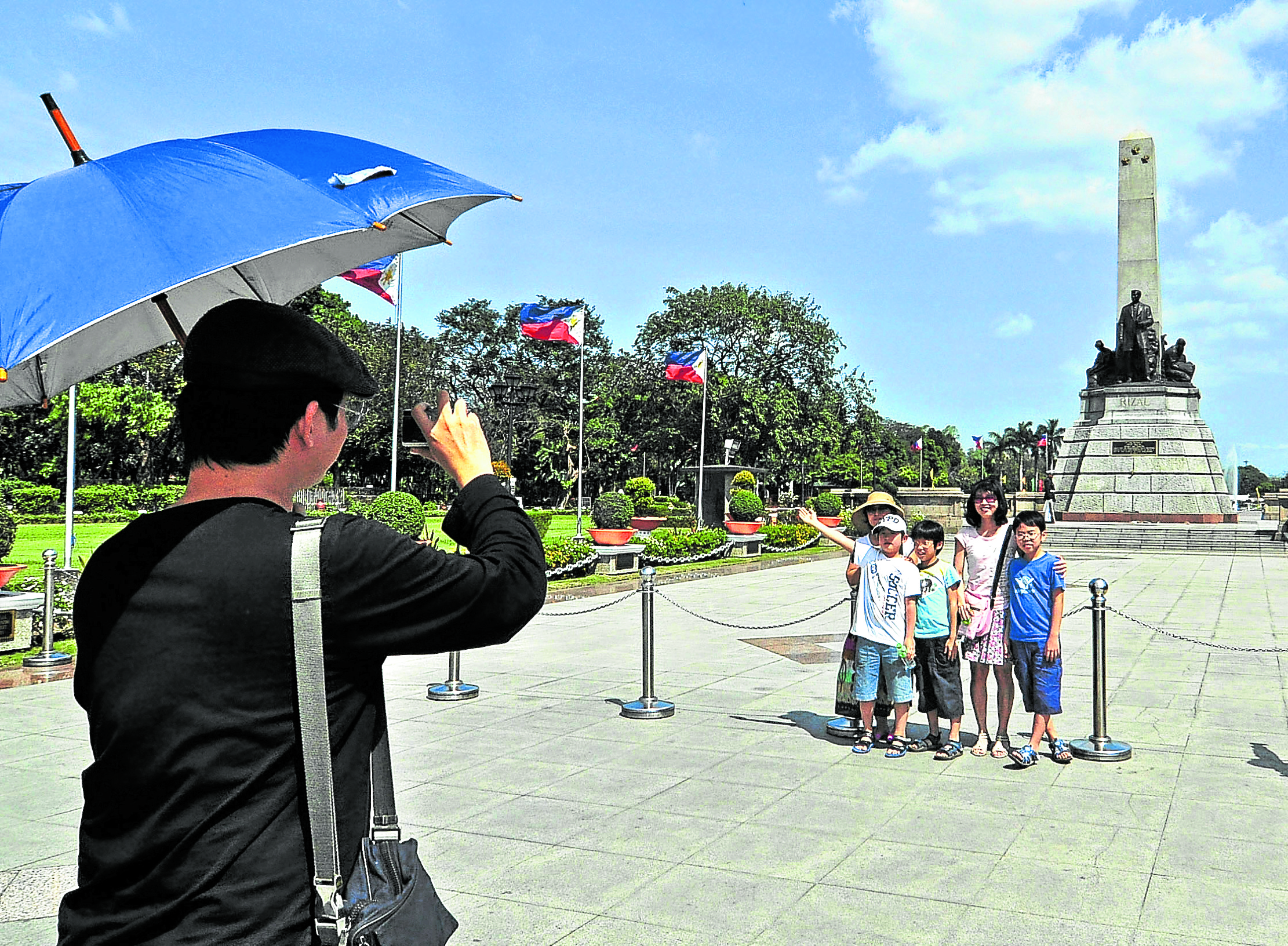
TOP MARKET South Koreans, such as these tourists at Rizal Park in this photo taken Jan. 30, 2011, accounted for more than half of the two million foreign travelers who arrived from January to March this year. —RICHARD REYES
South Korean tourists are still the Philippines’ top visitors, with one in every four foreign travelers who arrived in the country from January to March this year coming from the land of K-drama and K-pop idols.
According to the Department of Tourism (DOT), 27 percent, or 546,726, of the 2,010,522 international tourists who visited the country this year were South Koreans.
READ: South Korea is top source of tourists in 2023 — DOT
South Korea has been the main source of visitor arrivals to the Philippines since 2010, according to DOT data, with China, Japan and the United States rounding up the top four.
American travelers totaled 315,816 (15 percent); Chinese, 130,574 (6.5 percent); Japanese, 123,204 (6.1 percent), and Australians, 88,048 (4.38 percent).
Canada, Taiwan, the United Kingdom, Singapore and Germany ranked sixth to tenth in terms of the most visitors to the country so far this year.
There were also 116,446 overseas Filipinos who visited the Philippines during the period, the DOT said.
Prepandemic level spending
The number of foreign visitors so far this year was 15 percent higher than the 1,746,630 international arrivals recorded during the same period last year.
This increased the country’s tourism receipts for the first three months of the year to P157.62 billion, exceeding the pre-pandemic tourism income of P130.59 billion during the same period in 2019.
READ: Over 1.2 million int’l visitors arrived in first two months of 2024 — DOT
The DOT targets having 7.7 million international visitors this year, to inch closer to the all-time high 8.26 million visitor arrivals recorded in 2019.
During that year, the country generated P482.15 billion in international tourism receipts, according to the DOT.
Last year, 5,450,557 international travelers visited the country, bringing international tourism receipts of P482.54 billion that exceeded the P214.58 billion estimated visitor spending in 2022, according to the DOT.
About 26 percent or 1,439,336 foreign tourists last year were from South Korea.
This was followed by the United States with 903,299 tourists (16 percent); Japan with 305,580 (5.6 percent); Australia with 266,551 (4.89 percent) and China with 263,836 (4.84 percent).
After China, the other top sources of foreign tourists last year were Canada, Taiwan, the United Kingdom, Singapore and Malaysia.
Among the country’s Southeast Asian neighbors, Thailand reported welcoming 28 million international visitors in 2023, while Malaysia had 20 million; Singapore, 13.6 million; Vietnam, 12.6 million; Indonesia, 11.6 million; Cambodia, 5.45 million; Laos, 3.4 million, and Myanmar, 1 million.
Among Asian laggards
The recovery of the travel industry could have been stronger were it not for the slow return of Chinese tourists, Bank of America (BofA) said in a report released this month highlighting the “uneven” recovery in Asia tourism.
BofA said the Philippines, China, Hong Kong and Taiwan were the “laggards” in Asia as tourist arrivals in these destinations have yet to reach prepandemic levels, in contrast to the region’s tourism sector already entering the “last” leg of recovery from the pandemic.
In the Philippines, BofA noted that foreign visitor arrivals were still 76 percent of prepandemic levels as of February this year, albeit much better than Hong Kong’s 73.7 percent and Taiwan’s January 2024 figure of 69.6 percent.
Among the laggards, BofA said China was an “outlier” after it reopened its economy much later than other Asian destinations. Data compiled by the bank showed foreign tourist arrivals in China were 36.3 percent below prepandemic level as of December 2023.
In turn, the later reopening of China’s economy weighed on tourism recovery in countries that heavily depend on Chinese holidaymakers, such as the Philippines and Hong Kong.
Benefits of weak currency
Data compiled by BofA showed Chinese arrivals were only about 20 to 30 percent of prepandemic levels in the Philippines, below trends elsewhere in the region, and the recovery was unlikely to speed up anytime soon, with BofA noting the “changing preferences” of Chinese consumers.
“The typical Chinese traveler these days is increasingly interested in exploring domestic cities that offer unique cultural experiences. This has also slowed their return to international destinations,” BofA said.
On the other side of the market, it noted that tourism was now back to prepandemic vigor in Japan and Vietnam as they benefited from the weakness of their currencies.
BofA said Malaysia, Singapore and Thailand were among the “hopefuls” in Asia after seeing a sharp rebound in international arrivals in recent months. Meanwhile, India, South Korea, Australia, New Zealand and Indonesia were in the “middle of the pack” whose visitor entries were tracking at 80 to 85 percent of prepandemic levels so far.

